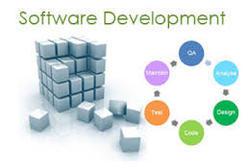Autolib Software Systems
Product Range
Fact Sheet
- Location:Tamil Nadu, India
- Year of Establishment:1998
- Business Type:Business Services
- Main Products:Human Resource Management Services,Software Development Service
- Reviews & Rating:
Get Verified, Sell more with
- Buyer's trust
- Faster conversions
- Better Rankings
- More
Its Free
Verify NowDocument Archiving And Video Editing Services
Content management practices and goals vary by mission and by organizational governance structure. News organizations, e-commerce websites, and educational institutions all use content management, but in different ways.
- FOB PriceNA
- Min Order QuantityNA
- Payment TermsNA
Other Details
Content management practices and goals vary by mission and by organizational governance structure. News organizations, e-commerce websites, and educational institutions all use content management, but in different ways. This leads to differences in terminology and in the names and number of steps in the process.
For example, some digital content is created by one or more authors. Over time that content may be edited. One or more individuals may provide some editorial oversight, approving the content for publication. Publishing may take many forms: it may be the act of "pushing" content out to others, or simply granting digital access rights to certain content to one or more individuals. Later that content may be superseded by another version of the content and thus retired or removed from use (as when this wiki page is modified).
Content management is an inherently collaborative process. It often consists of the following basic roles and responsibilities:
Creator - responsible for creating and editing content.
Editor - responsible for tuning the content message and the style of delivery, including translation and localization.
Publisher - responsible for releasing the content for use.
Administrator - responsible for managing access permissions to folders and files, usually accomplished by assigning access rights to user groups or roles. Admins may also assist and support users in various ways.
Consumer, viewer or guest- the person who reads or otherwise takes in content after it is published or shared.
Images













